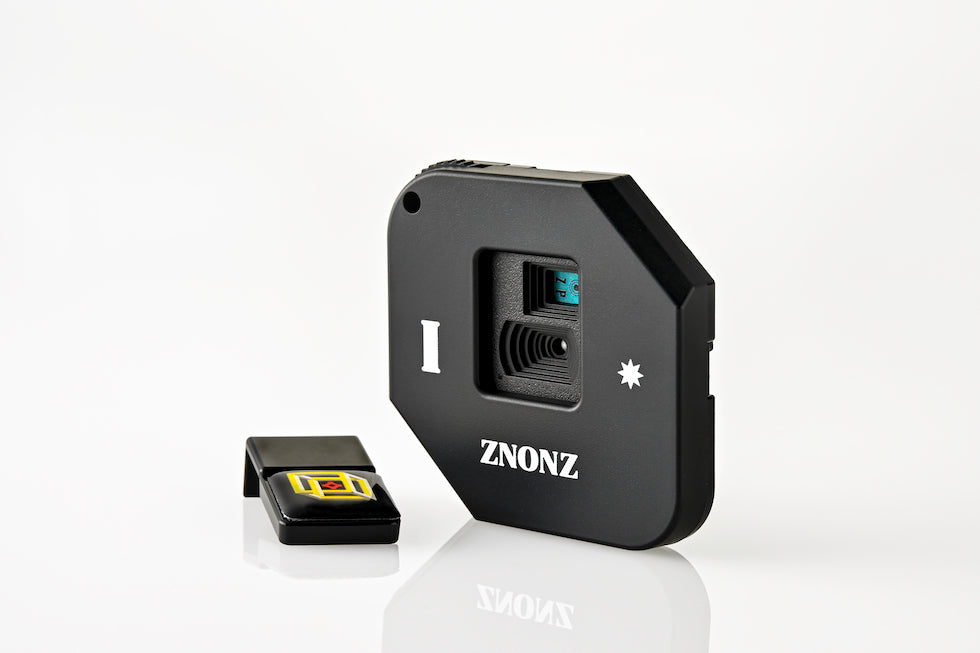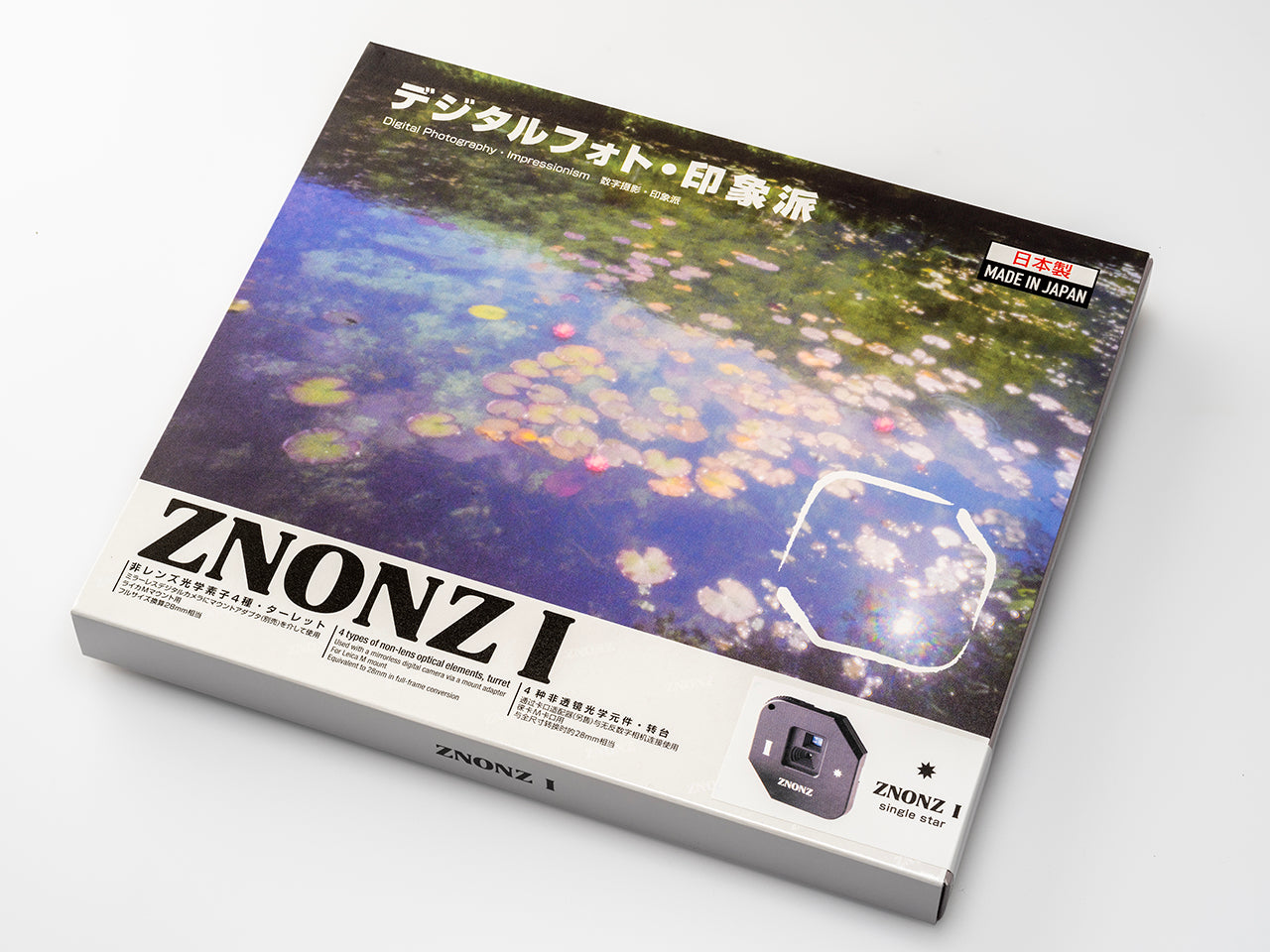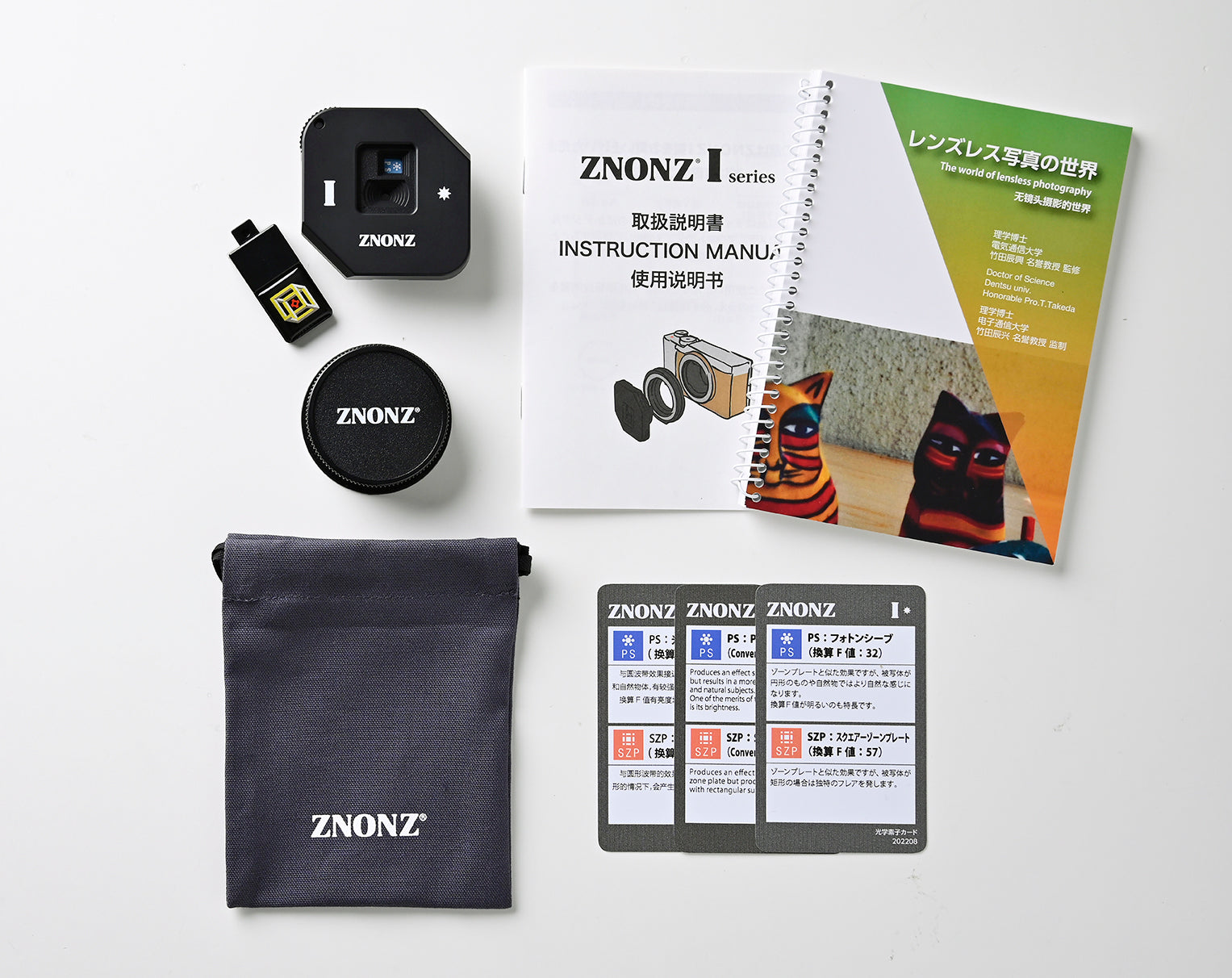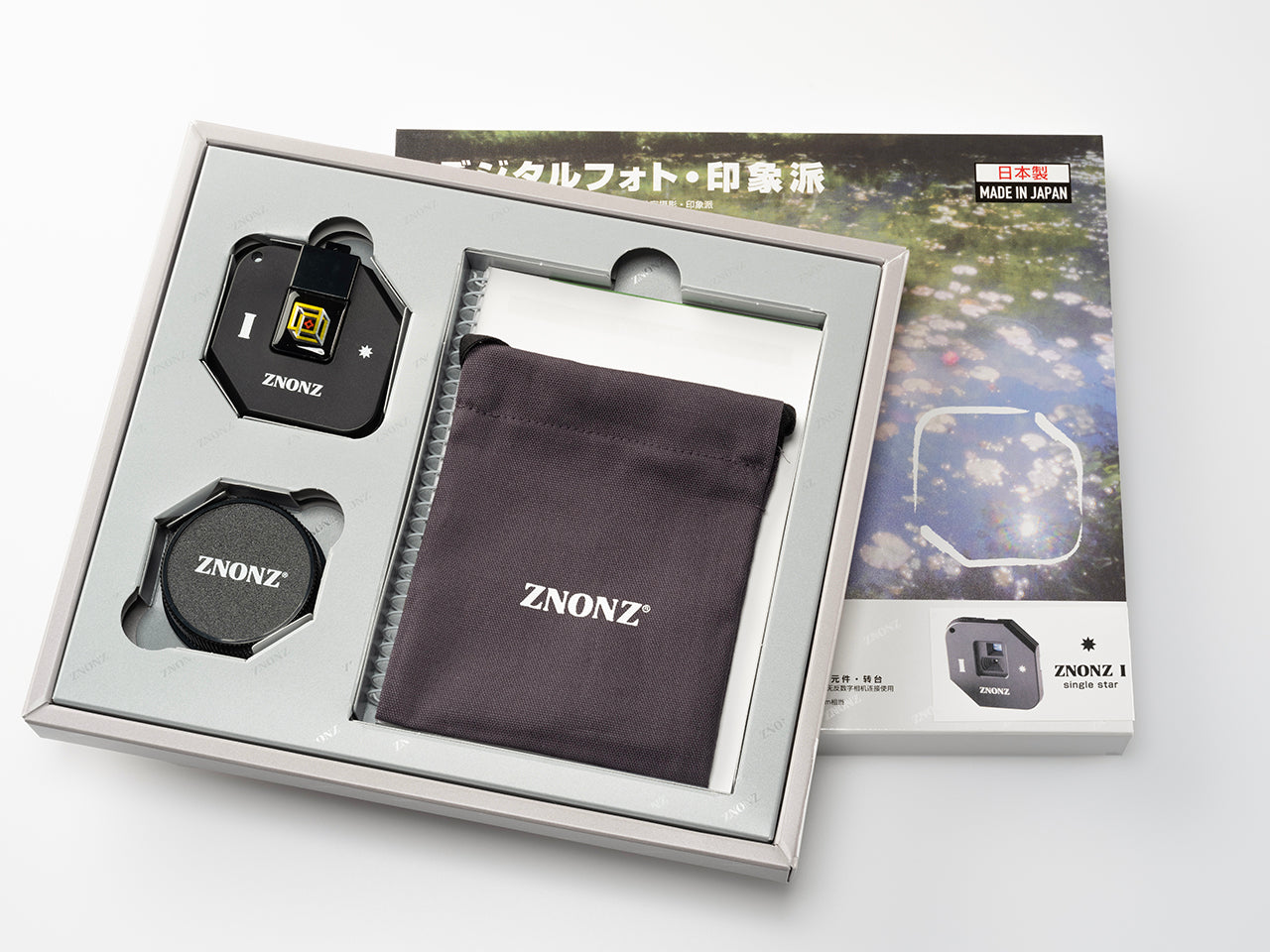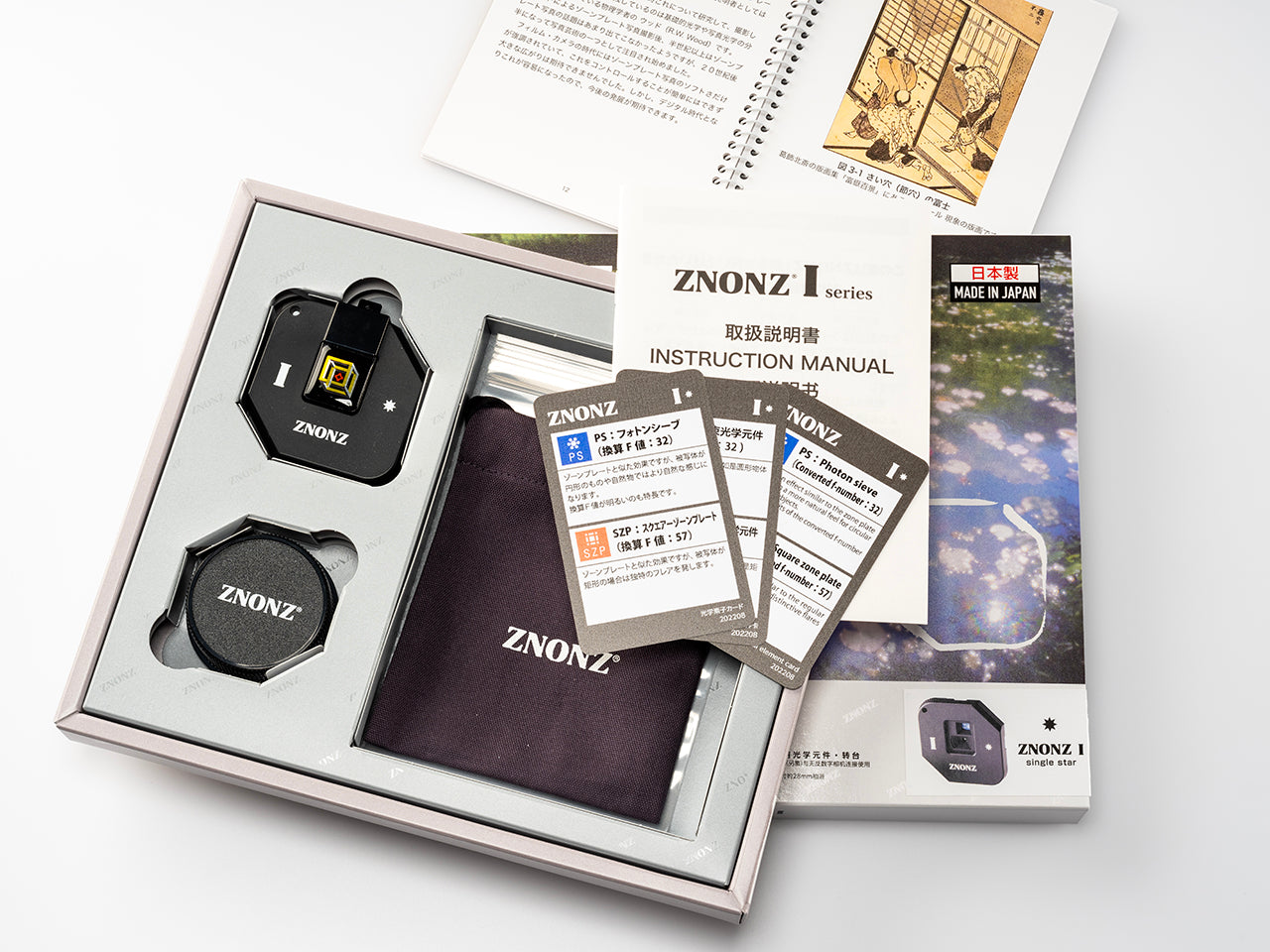ZNONZⅠ
Product name: ZNONZⅠs
Size: approx. 5.5 x 5.5 x 2cm
Weight: approx. 30g
The amount of blur will be the same whether the subject is at infinity or close up. When the sun enters the screen at a certain angle, it creates beautiful large color flares.
There are 4 types of non-lenses built into ZNONZⅠs.
・Pinhole (converted F value: 128)
・Zone plate (converted F value: 32)
・Photon sieve (converted F value: 76)
・Square zone plate (converted F value: 57)

- Regular price
- ¥12,800
- Unit price
- per
Tax included.Shipping calculated at checkout.
Couldn't load pickup availability.
